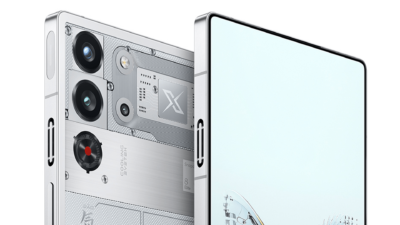Why are Ethereum and Solana Compared Like They’re in a Head-to-Head Battle?

In the dynamic world of cryptocurrencies, Ethereum and Solana have emerged as two heavyweight contenders, each vying for supremacy in the blockchain space. As their popularity soars, enthusiasts and investors often compare Ethereum and Solana like they’re locked in a head-to-head battle.
In this article, we’ll dive into the fascinating competition between these two blockchain giants, exploring their unique features and strengths and comparing Ethereum with the Solana price today to understand why they are pitted against each other in this captivating showdown.
1. Ethereum: The Pioneer and DeFi Pioneer
Ethereum is undoubtedly the trailblazer in the realm of blockchain technology. As the first platform to introduce smart contracts and decentralised applications (dApps), Ethereum revolutionised the way we interact with digital assets and conduct transactions. Its robust ecosystem has been a breeding ground for innovation, with numerous DeFi (Decentralised Finance) projects and NFT (Non-Fungible Token) marketplaces thriving on its blockchain.
Ethereum’s versatility and early-mover advantage have solidified its position as the leading smart contract platform. However, its success has also led to challenges such as scalability issues and high transaction fees during peak usage, which has paved the way for contenders like Solana to enter the competition.
2. Solana: The Scalability Champion
Enter Solana, a rising star in the blockchain arena, known for its unparalleled scalability and high-performance capabilities. Solana’s unique architecture, incorporating its Proof-of-History (PoH) consensus mechanism, enables the platform to process thousands of transactions per second, achieving near-instant finality.
This has catapulted Solana into the spotlight as the go-to choice for applications that demand real-time interactions and low transaction fees.
The gaming industry has particularly embraced Solana, as its high throughput and low latency provide the ideal foundation for multiplayer gaming and NFT marketplaces. In this aspect, Solana has managed to outshine Ethereum by offering seamless experiences for players and developers alike.
3. Scalability Showdown: The Battle for Efficiency
The scalability showdown between Ethereum and Solana has become a centerpiece of their head-to-head battle. Ethereum’s transition to Ethereum 2.0, which aims to improve scalability through the implementation of the Proof-of-Stake (PoS) consensus, is a testament to the importance of addressing scalability concerns.
However, this upgrade is a complex and time-consuming process, leaving room for Solana to gain ground as the blockchain of choice for those seeking immediate high-performance solutions.
Solana’s fast and efficient network is increasingly attracting DeFi projects and decentralised applications that require real-time interactions, while Ethereum grapples with congestion and high gas fees during peak usage. However, Ethereum’s established network effect and vast developer community ensure that the competition is far from one-sided.
4. Developer Ecosystem: Battle of Community Support
A critical aspect of the Ethereum vs. Solana battle is the strength of their developer ecosystems. Ethereum’s pioneering status has cultivated a massive and diverse community of developers, resulting in a wide range of applications and protocols. This established network effect has made it the default choice for many projects looking to leverage smart contracts.
On the other hand, Solana’s developer-friendly ecosystem, comprehensive documentation, and active community support have been significant catalysts for its rapid adoption. Solana’s strong focus on providing efficient tools and resources has attracted developers who seek to build high-performance applications and tap into the platform’s scalability advantages.
5. DeFi and NFTs: The New Battleground
The battle between Ethereum and Solana is not only about scalability and developer ecosystems but also about attracting DeFi and NFT projects. Both platforms are vying for dominance in the booming DeFi and NFT spaces, as these sectors showcase the potential for revolutionary financial and digital ownership solutions.
Ethereum’s DeFi ecosystem is well-established and boasts a diverse array of protocols offering lending, borrowing, and yield farming services. Similarly, Ethereum’s NFT marketplaces have been a hotbed of digital art, collectibles, and virtual real estate.
However, Solana’s high-speed blockchain has been making inroads into DeFi and NFTs, as its low fees and rapid transaction finality make it an attractive option for projects seeking seamless financial interactions and real-time asset trading.
In summary, the head-to-head battle between Ethereum and Solana is a fascinating clash of titans in the crypto arena. Ethereum’s pioneering status, vast developer community, and established DeFi and NFT ecosystem have cemented its position as the leader in smart contract platforms.
However, its scalability challenges and high transaction fees have opened the door for Solana to make a compelling case as a high-performance blockchain with real-time capabilities.
As both platforms continue to evolve, they are actively addressing their respective weaknesses and leveraging their strengths to gain an edge in the competition. Ethereum’s transition to Ethereum 2.0 and its focus on scalability improvements reflect its determination to maintain its dominance, while Solana’s robust ecosystem and developer-friendly approach demonstrate its ambition to disrupt the status quo.
In the end, the battle for supremacy is far from over. The crypto community eagerly watches as Ethereum and Solana go head-to-head in their quest to shape the future of blockchain technology. Whether it’s the seasoned pioneer or the agile newcomer that emerges victorious, the competition between these two titans promises to propel the industry forward and pave the way for even greater innovation in the years to come.
Alexia is the author at Research Snipers covering all technology news including Google, Apple, Android, Xiaomi, Huawei, Samsung News, and More.












